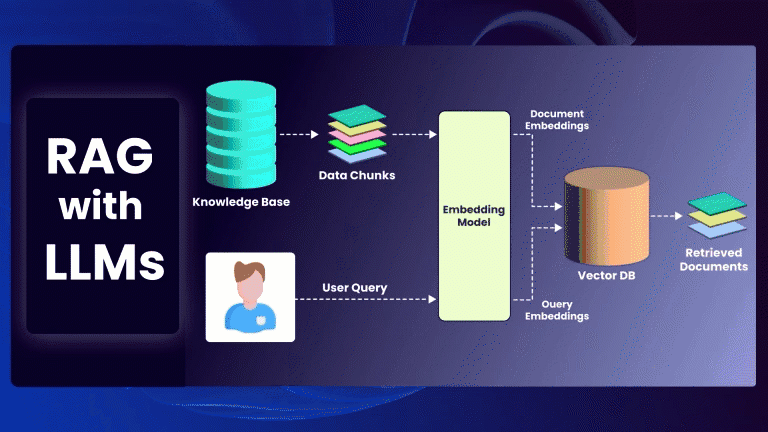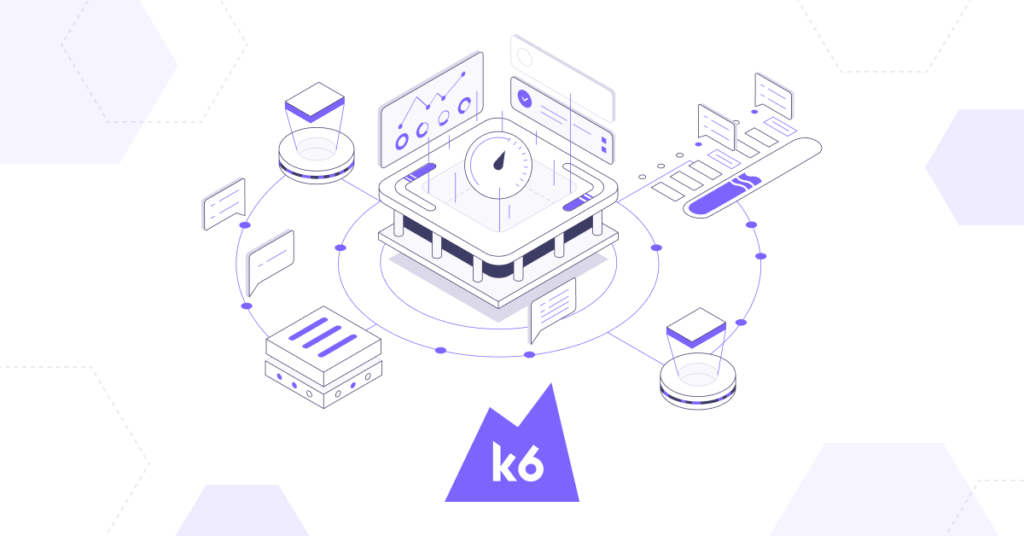The ability of Large Language Models (LLMs) to produce responses that resemble those of a human has completely changed natural language processing (NLP). Their heavy reliance on pre-trained data, however, means that they may generate inaccurate or out-of-date results..
This is where Retrieval-Augmented Generation (RAG) comes in. It bridges the gap between static AI models and real-time knowledge retrieval, making LLMs more accurate, reliable, and up-to-date.
What is RAG (Retrieval-Augmented Generation)?
Retrieval-Augmented Generation (RAG) is an AI framework that enhances LLMs by retrieving relevant external data before generating responses.
Unlike traditional LLMs that rely only on their training data, RAG fetches information in real-time from external sources such as:
- 🔹 Databases (e.g., Wikipedia, research papers, proprietary data)
- 🔹 APIs (e.g., financial reports, sports scores, latest news)
- 🔹 Enterprise knowledge bases (e.g., company documentation, customer queries)
Why is RAG Important?
- Improves factual accuracy by reducing hallucinations (AI-generated misinformation)
- Enables real-time updates without frequent model retraining
- Enhances domain-specific responses by integrating dynamic knowledge retrieval
How RAG Works: A Two-Step Process
RAG operates using a retrieval + generation approach, ensuring that AI-generated text is backed by real-time knowledge.
Step 1: Information Retrieval
The model first collects relevant data from an outside knowledge source in response to a user’s question. It uses methods such as
- Vector search (finding pertinent items by semantic matching)
- Knowledge graph queries (lookups for structured data)
- Retrieval via API (obtaining information from outside systems)
Step 2: Generation with Context Awareness
Following the retrieval of pertinent material, the LLM:
- Analyses the facts to comprehend the context
- Produces a response that is both factually correct and human-like
- Provides a thoughtful response based on the most recent information available.
Benefits of Using RAG in AI
- Increased Precision & Decreased Hallucinations:
- RAG reduces the amount of false information produced by AI by retrieving information in real time.
- No Retraining of the Model Is Necessary:
- Conventional LLMs need to be updated frequently. RAG gets rid of this by dynamically retrieving new data.
- Improved comprehension of context:
- RAG guarantees that, as opposed to static pre-trained data, AI-generated solutions are grounded in actual facts.
- Scalability in Business Applications:
- Companies can integrate proprietary knowledge sources to personalise AI chatbots and virtual assistants.
Real-World Applications of RAG
- AI Chatbots & Virtual Assistants
- RAG-powered chatbots provide real-time support by fetching the latest knowledge, reducing outdated responses.
- News & Fact-Checking AI
- Media companies use RAG to verify news against trusted sources before publishing AI-generated reports.
- Healthcare & Medical AI
- AI-driven diagnostic tools retrieve real-time medical research for doctors and healthcare professionals.
- Financial Analysis & Stock Market Predictions
- RAG enables AI-driven financial models to fetch real-time market data before making predictions.
Comparison: Traditional LLMs vs. RAG-Enhanced LLMs
| Feature | Traditional LLM | RAG-Enhanced LLM |
|---|---|---|
| Knowledge Source | Pre-trained Data | Pre-trained + External Retrieval |
| Accuracy | May hallucinate | High factual accuracy |
| Context Awareness | Limited to training data | Retrieves and understands real-time knowledge |
| Use Case Suitability | General responses | Real-time, industry-specific applications |
RAG’s Challenges and Limitations
Although RAG greatly enhances LLMs, there are few drawbacks as well:
🔴 Retrieval Quality Is Important: Inaccurate external data will result in an incorrect generated response.
🔴 Higher Latency: Real-time data fetching may cause response times to lag a little.
🔴 Security and Trust Issues: Organizations need to make sure that the data they retrieve comes from reliable and safe sources.
Solution? AI developers need to implement robust data validation mechanisms to maintain accuracy.
RAG’s Future in AI
For LLMs and AI-driven applications, Retrieval-Augmented Generation (RAG) is significant.
RAG insures that AI systems offer the following by using external knowledge retrieval:
- Factually accurate answers
- Contextually relevant responses
- Real-time updates without retraining
Reading & References
- 🔗 OpenAI Research on RAG: https://openai.com/blog
- 🔗 Hugging Face RAG Models: https://huggingface.co





